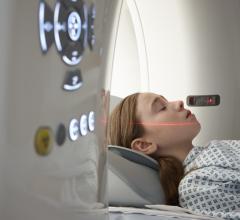
September 6, 2017 — A new study by the Harvey L. Neiman Health Policy Institute found that in the Medicare population, the utilization rates have increased in both volume and per beneficiary over the past two decades for the most common musculoskeletal (MSK) extremity imaging modalities. The study focused on radiography, magnetic resonance imaging (MRI), computed tomography (CT) and ultrasound.
Radiology was the dominant billing specialty for all imaging modalities with dominant market shares for MRI and CT. Physician offices were the most common site for imaging for all modalities except for CT, which was most commonly utilized in the hospital outpatient and inpatient settings. These insights may have implications for radiology practice leaders in making decisions regarding capital infrastructure, workforce and training investments to ensure the provision of optimal imagine services for extremity musculoskeletal care.
The study is published online in the American Journal of Roentgenology.
“Our results show that the utilization rates (per 1,000 Medicare beneficiaries) for all four musculoskeletal extremity imaging modalities increased over time,” said lead study author Soterios Gyftopoulos, M.D., an associate professor of radiology at NYU Langone Medical Center. “The largest increase was for CT throughout our study’s time period with a 754 percent increase in utilization from 1994 to 2013.”
Gyftopoulos and his colleagues used billing data obtained from Centers for Medicare and Medicaid Services (CMS) Medicare Physician Supplier Procedure Summary Master Files from 1994 to 2013. The Neiman Imaging Types of Service (NITOS) radiology claims classification system was used to identify those HCPS codes corresponding with non-vascular extremity imaging. The following increases in MSK extremity imaging were found over the past two decades: 43 percent for radiography, 619 percent for MRI, 754 percent for CT and 528 percent for ultrasound.
“An understanding of the utilization rates of common imaging modalities is an important first step toward determining the most cost-effective imaging strategies for patients with musculoskeletal conditions," added Richard Duszak, M.D., FACR, professor and vice chair for health policy and practice in the department of radiology and imaging sciences at Emory University and senior affiliate research fellow at the Neiman Institute. “Our findings support observations that physicians are increasingly relying on advanced imaging to ensure that their patients with musculoskeletal diseases receive the best care,” he said.
Read the article "CMS May Cancel Orthopedic and Cardiac Bundled Payments."
For more information: www.ajronline.org


 July 25, 2024
July 25, 2024 








